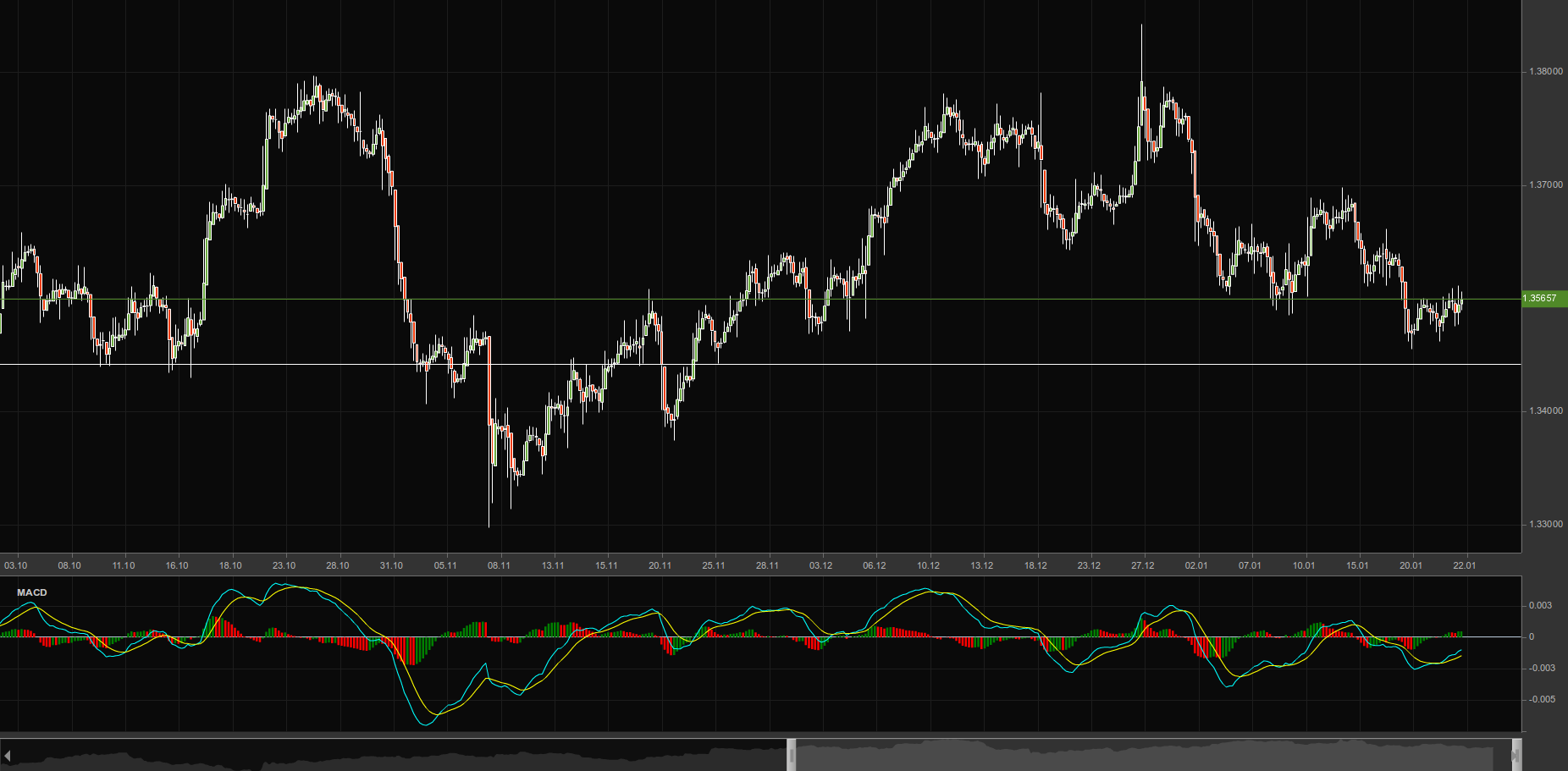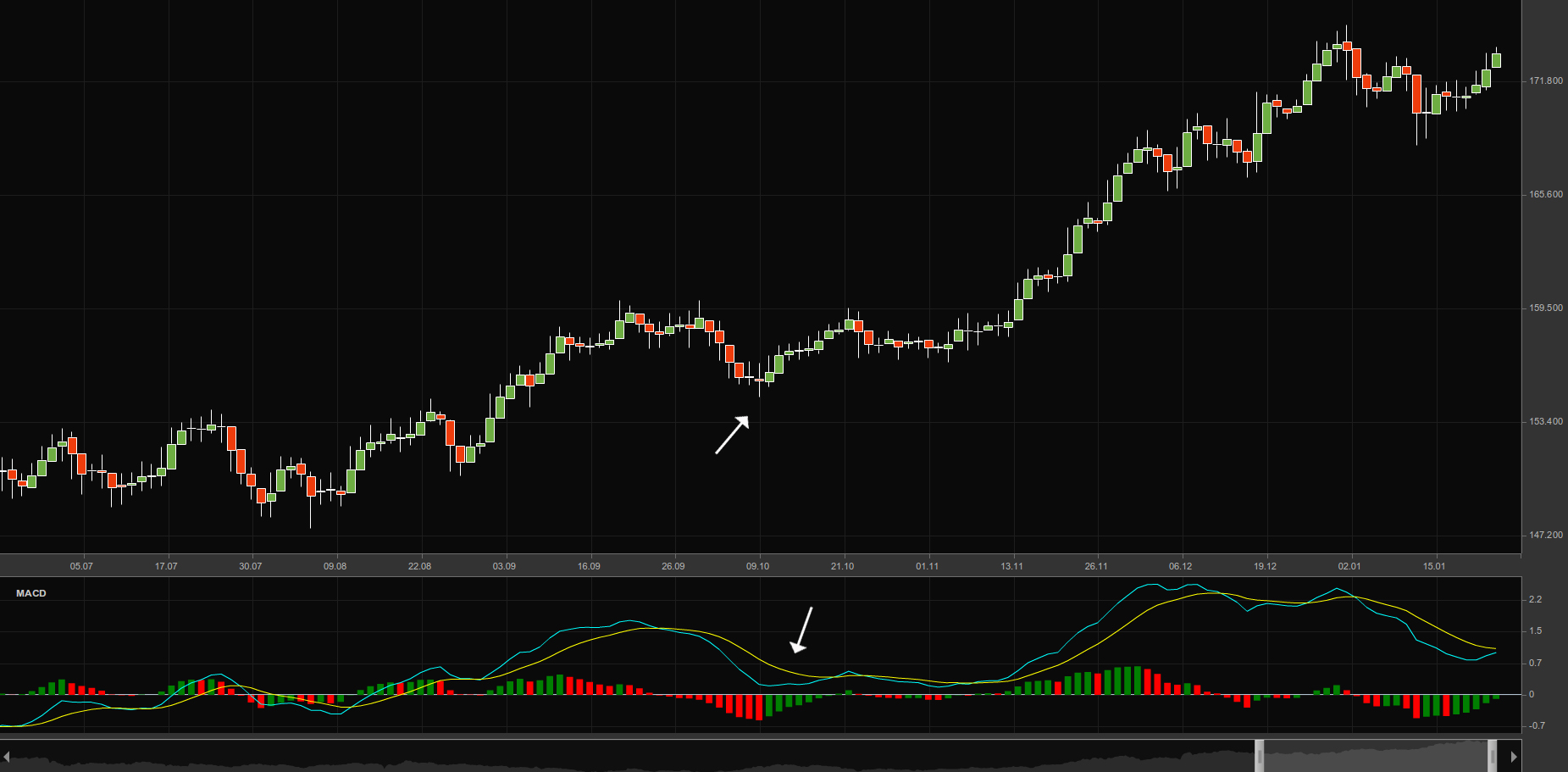Moving average convergence divergence (MACD)
This lesson will cover the following
- What defines the MACD?
- How to read MACD histogram?
- What is a divergence fakeout?
- Learn how to use the MACD Histogram for both entries and exits
Moving average convergence divergence (MACD) is among the technical indicators with a huge popularity when it comes to trading. The MACD is a preferred method by traders worldwide, because it is simple to understand and also flexible. It is usually used both as a trend-following indicator and as one gauging momentum.
It helps traders to decide what direction the price may take, how strong that movement may be and when a trend is likely to reverse. The MACD provides a trader with the opportunity to catch a trend just as it starts and also to exit one just before it comes to a halt.
What defines MACD?
The idea with the Moving Average Convergence Divergence is straight-forward. This indicator presents the difference between the 12-day and 26-day exponential moving averages (EMA) of a tradable instrument. If we are to compare these two moving averages that comprise the MACD, the 12-day EMA is evidently the faster and the 26-day EMA is the slower one. What is similar about them is, that their values are calculated with the use of close prices of the respective period. On the chart, an additional 9-day EMA is usually plotted, with its use being to act as a signal for long or short entries in the market. The MACD usually produces a signal to buy, in case it goes above its 9-day EMA. The indicator produces a signal to sell, in case it goes below its 9-day EMA.
Calculating the MACD is actually quite simple, as soon as one is aware of how to calculate moving averages. For any particular currency pair or other instrument one is to:
First, calculate a 12-day EMA using close prices,
Second, calculate a 26-day EMA using close prices,
Third, subtract the longer-term EMA from the shorter-term EMA,
Fourth, calculate a 9-day EMA of the MACD line produced with the subtraction above.
The chart above reflects an example of the MACD indicator applied to a currency pair.
MACD histogram
The MACD histogram provides an excellent visualization of what the difference between the MACD and its 9-day EMA is. The histogram tends to be positive, if the MACD stands above its 9-day EMA. And vice versa, the histogram tends to be negative, if the MACD stands below its 9-day EMA.
In case of rising prices, the histogram will grow larger, because the pace of price action accelerates. If the pace of price action decelerates, the histogram will contract.
In case of falling prices, the same principle works in reverse.
The histogram is what attracts more and more traders to the MACD indicator, especially if they intend to gauge momentum. The histogram reacts to the pace, at which prices move. It is a practice many traders to use the MACD more frequently in order to measure how strong price movement appears to be, than to detect trend direction.
Divergences can also be spotted with the use of the MACD histogram. A common setup is to detect points on the chart, where price action reaches a new swing high (new swing low), but the MACD histogram, however, fails to do so, thus, giving a signal that a divergence between price and momentum has occurred.
Divergence fakeout
Trading divergences, however, is not about accuracy. In most cases it fails, rather than succeeds. Prices often demonstrate a few final surges or plunges, triggering protective stops and forcing players out of the market, before price movement actually takes a turn and the trade produces a profit.
The chart above demonstrates a divergence fakeout, a situation which has brought trouble to lots of traders in the past.
Many traders often record losses using a strategy like this, because they enter into a trade when the MACD indicator gives a signal, but decide to close the position purely on price movement. As the MACD histogram is derived from prices, but is not actually price, this method represents the trading equivalent of “mixing apples and oranges”.
How to use the MACD Histogram in order to enter and exit the market
In order to find a solution to the antilogy between an entry and an exit, one may use the MACD histogram in both cases – to trade entry and exit signals.
When trading a negative divergence, traders would partially sell at the spot where divergence occurred initially, but instead of placing the protective stop at the closest swing high based on price movement, they would stop out the trade, only in case the high of the MACD histogram comes above its prior swing high, which implies momentum is, in fact, accelerating, while traders have positioned themselves incorrectly.
However, in case the MACD histogram does not produce a new swing high, traders would add to their initial position, striving to achieve a higher average price for their short entry.
Forex traders position themselves differently in order to dispose of such a strategy. The greater the amount of the position, the more significant the potential profit is, after the price changes its direction. In currency trading such a strategy may be exercised regardless of the size of the position, as traders do not need to worry about the influence on prices. They are able to make transactions of 100 000 currency units or of 1 000 currency units using a spread of 3-5 points in major currency pairs.
This strategy forces traders to average up, because the market moves against them for a certain period. However, it is not considered as a reliable strategy. A number of books have labeled such a method as “adding to your losers.”
Taking into account the histogram, to trade the MACD instead of the price presents a new opportunity to trade an already familiar idea, the divergence. Using this method in Forex trading, which allows scaling in and out of trades with little to no effort, makes the idea more tempting to those engaged with day trading and position trading.

